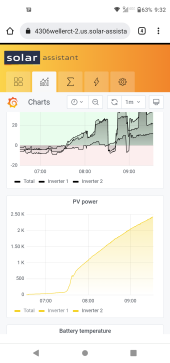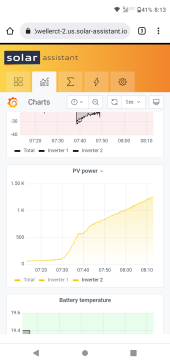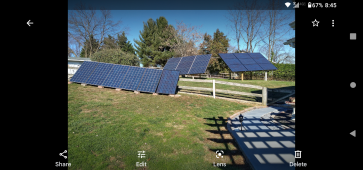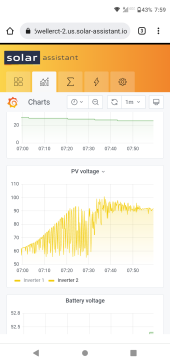Hi guys,
I'm on a journey to understand the intricacies of my system!
I have a 3kW array capable of about 320VOC, connected to an AIO 5kW unit. I'm in the UK, and my panels are mounted flat, so I am of course not seeing very high array voltages much at the moment. I've been watching the data output from my unit for a while now, and my array seems to sit at 120V a lot. Yet, at this voltage I don't seem to get any charging current to the battery. Is this normal?? My battery is only at about 50% SOC so surely I should be getting at least some charging if my array is producing voltage?
I'm on a journey to understand the intricacies of my system!
I have a 3kW array capable of about 320VOC, connected to an AIO 5kW unit. I'm in the UK, and my panels are mounted flat, so I am of course not seeing very high array voltages much at the moment. I've been watching the data output from my unit for a while now, and my array seems to sit at 120V a lot. Yet, at this voltage I don't seem to get any charging current to the battery. Is this normal?? My battery is only at about 50% SOC so surely I should be getting at least some charging if my array is producing voltage?







